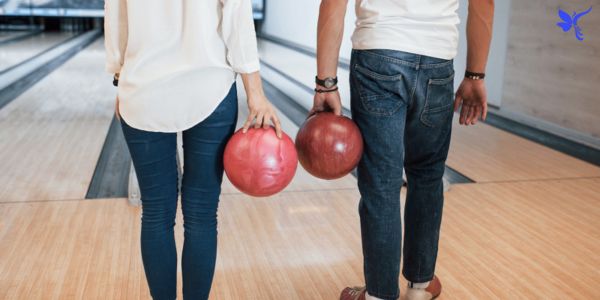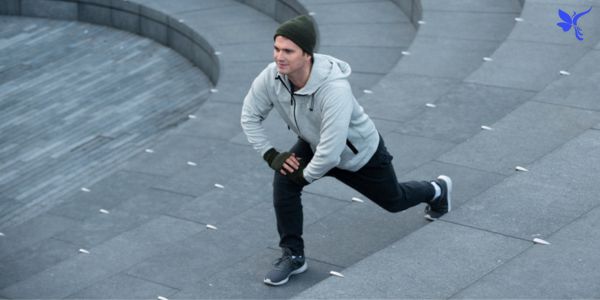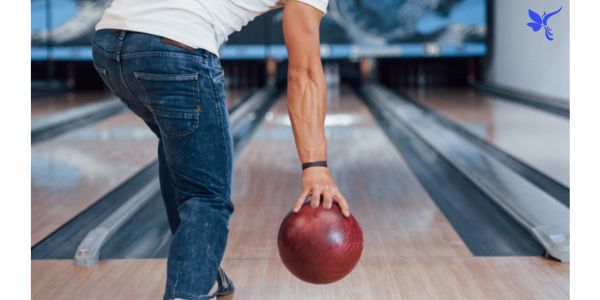Bowling, a beloved American activity enjoyed by families and enthusiasts alike, can sometimes lead to unexpected physical challenges. While the sport provides immense fun and social opportunities, its repetitive motions put considerable strain on the body. Understanding treating bowling-related injuries is vital for continued enjoyment and performance enhancement.
This guide will illuminate common ailments and proven strategies, helping you navigate the path to recovery with confidence and return to your favorite lanes strong and pain-free.
Understanding the Demands of Bowling: A Repetitive Exercise
Bowling involves highly repetitive motions, placing considerable stress on your body. This constant action can lead to gradual wear and tear. The repetitive nature of bowling means your upper extremities, particularly your wrist, elbow, and shoulder joints, absorb significant stress. As a bowler continuously repeats the same precise movements, this athletic pursuit truly demands considerable effort from your physique.
Even casual participation can induce overuse injuries. The lower back, knees, and hips also face significant impact during the approach and delivery. Consulting a sports health professional like a sports physical therapist for proper diagnosis is always a wise first step when you experience pain and avoid bowling-related injuries in future.
Common Bowling Injuries: What Are They and How to Avoid Them?
Bowling-related injuries often stem from overuse and repetitive stress placed upon your tendons. These strong bands of tissue connect muscle to bone, allowing for crucial joint movement. When you stress them repeatedly, you will feel pain and stiffness in your joints.
Common orthopedic injuries include Bowler’s Elbow, or epicondylitis, which develops due to repetitive wrist movements. Shoulder Tendonitis comes from quick swinging. Bowler’s Thumb can pinch the ulnar nerve if your thumb hole is too tight. Carpal Tunnel Syndrome causes numbness and tingling, and Trigger Finger irritates a tendon sheath.
Strike Out Pain: Focusing on Wrist Injuries in Bowling

Wrist pain is a very common complaint among bowlers. Poor technique and overuse during long sessions contribute significantly. This can lead to wrist tendonitis, a sprain, or a strain, which greatly impacts your game. Identifying the causes of wrist pain is a crucial first step in any effective treatment plan.
Beyond the Wrist: Addressing Other Common Upper Extremity Injuries
Beyond wrist injuries, your elbows and shoulders face considerable stress. The forceful swinging motion often causes shoulder tendonitis, leading to shoulder pain. Repetitive wrist movements can inflame elbow tendons, leading to Bowler’s Elbow. These are prime examples of upper extremity injuries.
Protecting Your Lower Body: Knee, Ankle, and Foot Injury Prevention
Your lower body also needs safeguarding from bowling injuries. Improper footwear or awkward landings can frequently lead to painful knee, ankle, and foot injuries for bowlers. Maintaining strong back strength and hip strength for spinal stability throughout your approach is paramount for injury prevention.
The Foundation of Performance: Core, Lower Extremity, and Balance Training
A robust core provides a stable base for your entire bowling mechanics. Muscle strengthening in this area prevents undue strain. This foundational strength supports powerful, controlled movements, helping you maintain the same approach every time.
Furthermore, lower extremity strength and balance training are vital for performance enhancement. They enhance stability during your approach and delivery. Improved balance reduces the risk of falls and awkward movements, minimizing potential bowling injuries. This practice is vital for young women due to their elevated risk of lower extremity injury.
The Art of the Approach: Optimizing Your Bowling Technique for Injury Prevention
A refined proper bowling technique is your best defense against injury. A smooth and fluid motion minimizes jerky movements, which can cause excessive strain. This careful method lessens the ongoing strain on delicate joints, akin to a dancer’s seamless movement.
Proper form distributes force effectively, preventing overuse injuries. Consider working with a professional bowler or a bowling coach. Their instructor feedback can fine-tune your delivery, ensuring both power and safety. This form improvement is key.
Essential Gear: The Role of Proper Grip, Ball Fit, and Footwear
Appropriate equipment significantly contributes to injury prevention during your bowling activity. A properly fitted bowling ball is non-negotiable. An improper grip size or hole size can lead to issues like Bowler’s Thumb, causing pain when gripping the ball. The ball should feel comfortable for hand comfort.
Additionally, proper footwear provides essential traction and support. This prevents slips and strains, protecting your knees, ankles, and feet. This gear acts as your first line of defense against bowling injuries on the lane, like a sturdy fortress for your feet.
Preparing for Success: The Importance of a Structured Warm-Up

A comprehensive warm-up routine is your pre-game ritual. It prepares your muscles and joints for the demands of bowling. This vital step increases blood flow and flexibility, just like oiling a rusty machine.
Include dynamic stretches targeting your shoulders, elbows, and wrists. A warm-up routine created by a sports health professional notably lowers your risk of bowling injuries, readying you for an excellent game.
When Pain Strikes: Recognizing Symptoms and Seeking Diagnosis
Early recognition of injury signs and symptoms is absolutely essential. Persistent pain, swelling, or limited range of motion demand attention. Seeking professional evaluation and accurate diagnosis is paramount for treating bowling-related injuries effectively.
Medical professionals will perform a physical examination and may order imaging tests such as X-rays or an MRI. These tests can identify fractures, ligament tears, or other abnormalities. Early diagnosis is like catching a small fire before it becomes an inferno.
On the Road to Recovery: Effective Treatment Options for Bowling Injuries
Pain alleviation commonly begins with the RICE protocol: Rest, Ice, Compression, and Elevation. For more persistent issues, professional intervention becomes necessary for treating bowling-related injuries. When discomfort arises, pause your bowling activity.
Treatment options vary based on the injury’s severity. These may include physical therapy, occupational therapy, or medications to manage pain and inflammation. In severe cases, surgery might be needed to repair damaged ligaments or bones. It’s always smart to consult a healthcare professional for a tailored treatment plan.
Rebuilding Strength: Rehabilitation Exercises for Bowlers
Rehabilitation exercises are paramount for full recovery. They rebuild strength, improve flexibility, and restore range of motion to the affected area. This structured approach is fundamental for treating bowling-related injuries, like a sculptor painstakingly restoring a masterpiece.
Partner with a physical therapist to create a rehabilitation plan specifically for your needs. Exercises such as wrist curls, wrist extensions, grip strengthening exercises, and finger exercises rebuild resilience, preparing you for a safe return to bowling.
The Comeback Trail: Returning to Bowling After an Injury

Returning to the lanes requires patience and a cautious approach. Gradually increase your activity level, listening intently to your body’s signals. This prevents re-injury after treating bowling-related injuries, like a careful climber ascending a peak.
Start with light practice sessions focusing on impeccable proper technique and controlled release. Continue your rehabilitation exercises and warm-up routines. A measured comeback ensures long-term enjoyment of the sport, preventing pain or limited mobility from holding you back.
Key Takeaways for a Pain-Free and Powerful Game

Prioritize bowling injury prevention by focusing on smart preparation and proper form. Always remember, your body is truly your most vital equipment on the lane. Invest in its well-being with muscle strengthening and balance training.
Embrace a holistic approach to your game. A healthy, well-prepared bowler not only avoids setbacks but also unlocks their full potential for performance enhancement and a truly pain-free game.
Conclusion
Treating bowling-related injuries requires a blend of proactive prevention and responsive care. By understanding the demands of the sport, equipping yourself properly with appropriate ball fitting and proper footwear, and listening to your body, you can enjoy countless strikes without the shadow of pain. The journey of healing process from bowling injuries leads to greater enjoyment.
Table: Common Bowling Injuries and Their Primary Affected Areas
| Injury Type | Primary Affected Area(s) | Key Contributing Factor |
| Bowler’s Elbow | Elbow, Forearm | Repetitive wrist flexion |
| Bowler’s Thumb | Thumb, Ulnar Nerve | Tight thumb hole |
| Shoulder Tendonitis | Shoulder | Forceful swinging |
| Carpal Tunnel Syndrome | Wrist, Hand, Fingers | Median nerve compression |
| Trigger Finger | Finger, Tendon Sheath | Constant gripping |
| Lower Back Pain | Lower Back | Repetitive trunk flexion |
FAQ
How to treat bowling injuries?
Rest, ice, compression, and elevation often help initially, but persistent pain requires consulting a medical professional for proper diagnosis and a personalized treatment plan.
What is the most common injury in bowling?
Bowler’s Elbow, also known as epicondylitis, often arises from the repetitive wrist movements used when swinging and releasing the bowling ball.
How do you treat bowling wrist pain?
Treating bowling wrist pain often involves rest, anti-inflammatory medication, and rehabilitation exercises to regain strength and mobility.
Can you pull a muscle from bowling?
Yes, the forceful movements and repetitive stress of bowling activity can definitely lead to pulling or straining muscles, especially in the back or shoulder.
What tendons are sore from bowling?
Commonly affected tendons include those around the elbow (for Bowler’s Elbow), shoulder (Shoulder Tendonitis), and wrist (wrist tendonitis).
What is the most common injury in fast bowling?
In fast bowling, which refers to cricket, lower back pain and side strains are prevalent due to the explosive movements and twisting required.
